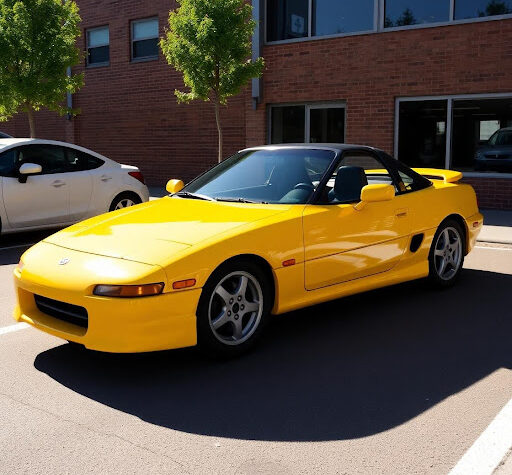
There is a change of the guard at Rheinmetall Automotive’s parent company KSPG. Horst Binnig has been appointed chief executive officer, with effect from January 1, 2014. As Executive Board member of Rheinmetall AG, he will also represent the interests of the automotive sector within the Rheinmetall Group. He succeeds Dr. Gerd Kleinert, who is retiring after 13 years at the helm.
Automotive Industries (AI) asked the two whether there would be a change in management focus.
Dr. Kleinert: In this management changeover we are emphasizing continuity—toward our employees, our customers, and our suppliers. The fact is that Horst Binnig has been with the group since 1999. He is closely familiar with all areas within the group and, moreover, has been on the executive board since early 2012.
Binnig: We will also be emphasizing continuity in our engineering profile. As I see it, our business must continue to focus on the important points. These include the courage to continue in the direction of further innovations and not lose momentum when it comes to the internationalization of our operations. I feel that maintaining these cornerstones and pushing ahead with KSPG’s success story are also important with respect to our parent company.
AI: What are KSPG’s new products for emission reduction and lowering fuel consumption?
Dr. Kleinert: These areas cover over 50% of our products, and throughout the divisions we have come up with new products which are now being presented to the market. In Hardparts, these are largely all the newcomers relating to the issue of friction reduction. Examples are new coatings or surfaces for bearings, pistons and engine blocks that help make these components more efficient while enhancing their strength. An interesting newcomer, for example, is a steel piston for a car engine. This will be the first such seriesproduction steel piston and is scheduled to come on stream in 2014. In the Mechatronics division that is traditionally the home of emission-control and fuel-saving components, I am thinking of our UniValve and Flexvalve variable valve trains, new kinds of compact exhaust-gas recirculation systems and the solenoid valves. As for pumps, further attention is being paid to trend toward on-demand operation. One example is an electrically driven pump for generating vacuums — a product that will also perfectly fit in with future drive systems.
AI: What would be the future potential of the internal combustion engine for meeting the stringent CO2 norms coming up?
Dr. Kleinert: I think that the experts all agree that the full potential of the internal combustion engine is far from exploited. Beside the well-known options of downsizing and modifying the intake/exhaust cycles, we will identify many more in-engine refinements that contribute toward achieving the stringent consumption and CO2 requirements. Joining these are many individual steps for reducing friction between engine parts and for on-demand operation of fuel-consuming components. We can assume a complete package of measures will be implemented in order to be in line with legislation and avoid having to pay penalties. From this point of view, I perceive ample development potential for the internal combustion engine both regarding fuel savings and general efficiency. These are trends that, of course, propel our own business.
Binnig: And please bear in mind that many countries of the world have still adopted emission norms equivalent to Euro 3 or Euro 4, and their CO2 legislation is laxer than Europe’s and the USA’s. So, here there is an enormous need to catch up in order to approximate the new standards of technology.
AI: What are new developments in piston technology?
Binnig: In piston technology developments are moving in two main directions. The first is the ongoing fine-tuning of pistons built from aluminum and lightweight gasoline engine pistons. These are complete piston assemblies consisting of components closely matching each other, and new combinations of materials for diesel pistons supplemented by special techniques for strengthening and cooling the highly stressed bowl lip. We feel that aluminum offers potential here as well. For extra-high-duty pistons we are also offering new varieties made from steel which, starting from 2014, will be going into series production for the first time. The steel pistons we have developed are on a par with their aluminum cousins in terms of weight. The noise issue has also been resolved. Because of their lower heat expansion coefficient, steel pistons have much reduced cylinder clearance. The shorter piston combined with a longer connecting rod guide results in appreciably reduced friction plus fuel savings in the region of 4%.
AI: What is your contribution to e-mobility?
Binnig: Even though we can safely assume nowadays that internal combustion engines will be predominant for a long time to come, we are working on e-mobility solutions. These embrace the on-demand power consumers, such as electric coolant and vacuum pumps. We have also successfully presented a demonstrator electric vehicle whose spare wheel tray houses our new range extender. With this power generating unit and on an almost empty battery, the car can still run for around 400 km. As a longstanding development partner of the automakers we are, of course, sharing in the development of fuel-cell components. Included in our wide-ranging areas of activity is thermal management for electric and fuel-cell vehicles.
AI: What are the specific advantages of the KSPG range extender?
Dr. Kleinert: The range extender, co-developed by KSPG and FEV, is special in a number of ways. To begin with, it is very compact and can be installed at various places in vehicles. It’s vibration compensation makes it ideal for electric vehicles since the driver does not realize when the V-engine is being used to generate electric power. So, the special sensation of driving an electric vehicle is undiminished. The driver can be certain of achieving mileages on a relatively small battery and comparable to a conventional I.C. engine thanks to the range extender.
AI: How do you see the market opportunities for the range extender?
Binnig: Following diverse trials on the part of various international OEMs, the response to the test unit has been very positive. Electric vehicles from international manufacturers are presently at the launching stage and among these are range extenders in various configurations. For the time being, we regard our REx as a technology driver designed to underline our expertise also in this aspect of modern drive systems. All in all, I think that here we have a thoroughly marketable proposition offering a host of advantages.
AI: What can we expect from KSPG in the future?
Binnig: Our clear intent—as it has been for over a century—is to continue to help shape efficient and resources-saving mobility of the future. Within our areas of expertise we intend to deliver sustainable contributions in our role as co-developer partnering the international OEMs. The entire KSPG crew comprising over 12,000 employees worldwide is doing its utmost to achieve this




More Stories
How to Create the Ultimate Off-Road Vehicle Garage: A Practical Guide
Bangkok International Motor Show 2025 – The Talk of Sensuous Automotive
GlobalLogic Pioneering Software-Defined Vehicles, AI Innovation, and Sustainable Solutions for the Future of Automotive Mobility